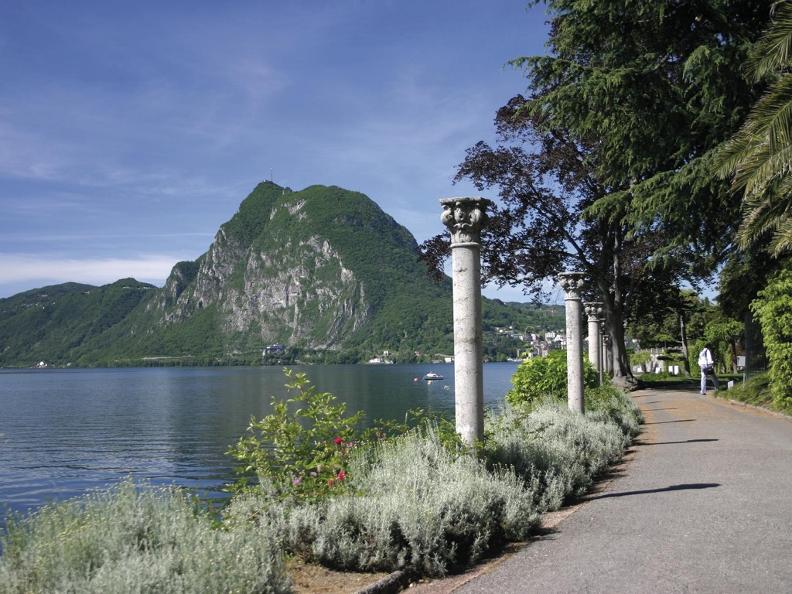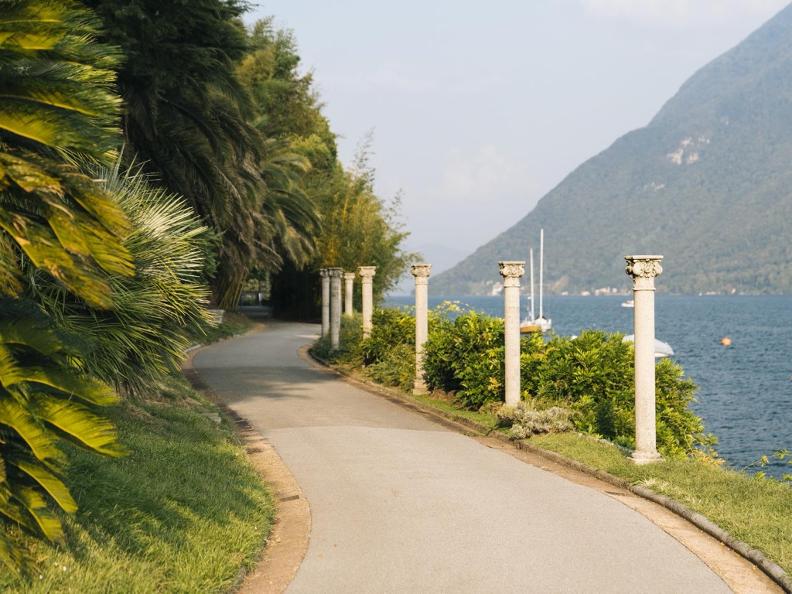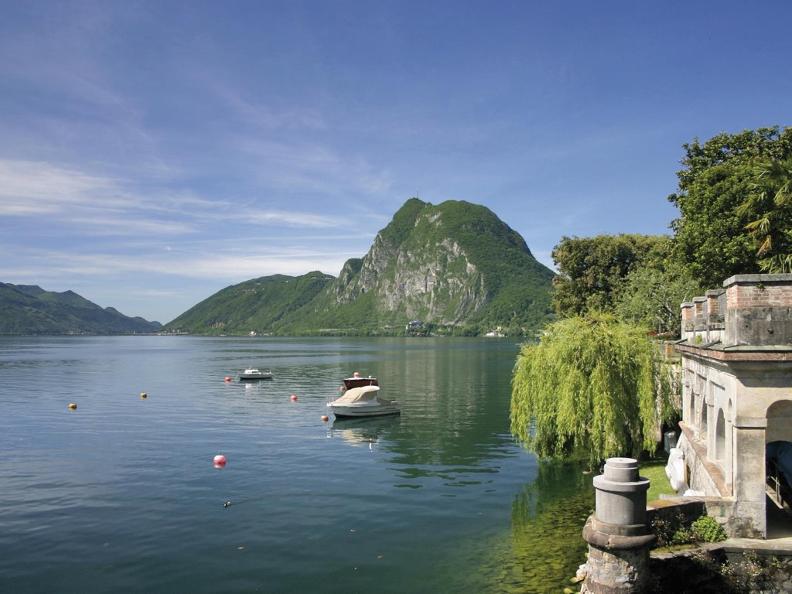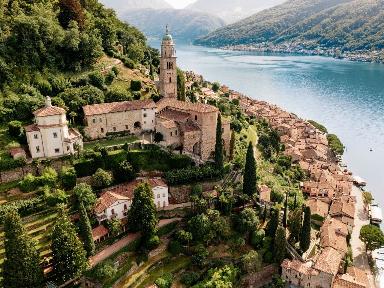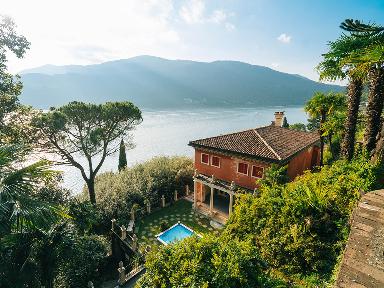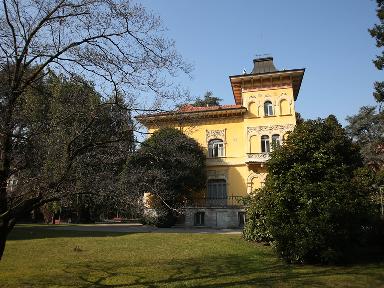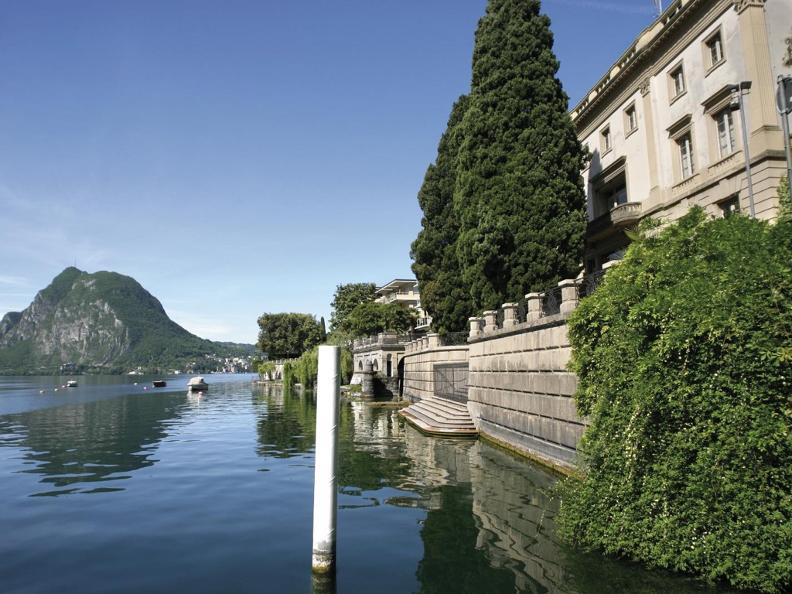
It is a small flowering jewel located in Castagnola, on the shores of Lake Lugano, in a very sunny position protected from cold currents.
Thanks to its special microclimate, the park, designed in the 1930s according to the dictates of Art Nouveau, surprises with a rich Mediterranean vegetation (orange trees, lemon trees, date palms, Cycas, etc.) that can only be found in this area of Lugano.
The neoclassical villa was home to the Museum of Cultures until 2015 (now at Villa Malpensata). Between 2023 and 2025, it hosted the Bally Foundation, an organisation devoted to contemporary art in all its forms, which curated two temporary exhibitions annually.
The Heleneum Park was built, in pure Art Nouveau style, in 1931, at the same time as the villa, a faithful copy of the Petit Trianon in Versailles. From the Heleneum, continuing about 200 metres in the direction of Gandria, one reaches an oasis of peace overlooking the lake: the Parco degli Olivi.
The history of the building, like that of the garden, is linked to the figure of Hélèn Bieber, an avant-garde dancer in Paris, who set up a social and cultural meeting centre in her Lugano home.
Hélèn Biber died in 1967, after a decidedly eventful life, and the property was purchased by the Municipality of Lugano, which used it for more than twenty years for a variety of functions.
The large garden surrounding the building offers an extraordinary variety of subtropical and tropical plants and flowers, which withstand the rigours of winter thanks to a favourable microclimate unique to the Lugano area. Among the many specimens, we find lemon, orange, grapefruit and Chinese mandarin trees (Kumquat), then date palms (Phoenix canariensis), Chilean palms (Jubea chilensis), Cycas revoluta from Central America and the Japanese palm (Trachycarpus fortunei). In addition to a collection of rare camellias, you can admire blue and white Agapanthus and fragrant yellow-orange False Ginger plants. There are also wisteria and old climbing roses. As far as tree species are concerned, the park boasts cedars, green cypresses, medlar trees from Japan and an imposing Eucalyptus from Australia.
The park's original 1930s furnishings, such as the stairs, columns, tuff stone grotto, railings and wrought-iron gates represent, together with the distinctive vegetation, a unique combination for parks in Lugano.
Features
- PARKS AND GARDENS Botanical gardens , City Parks
